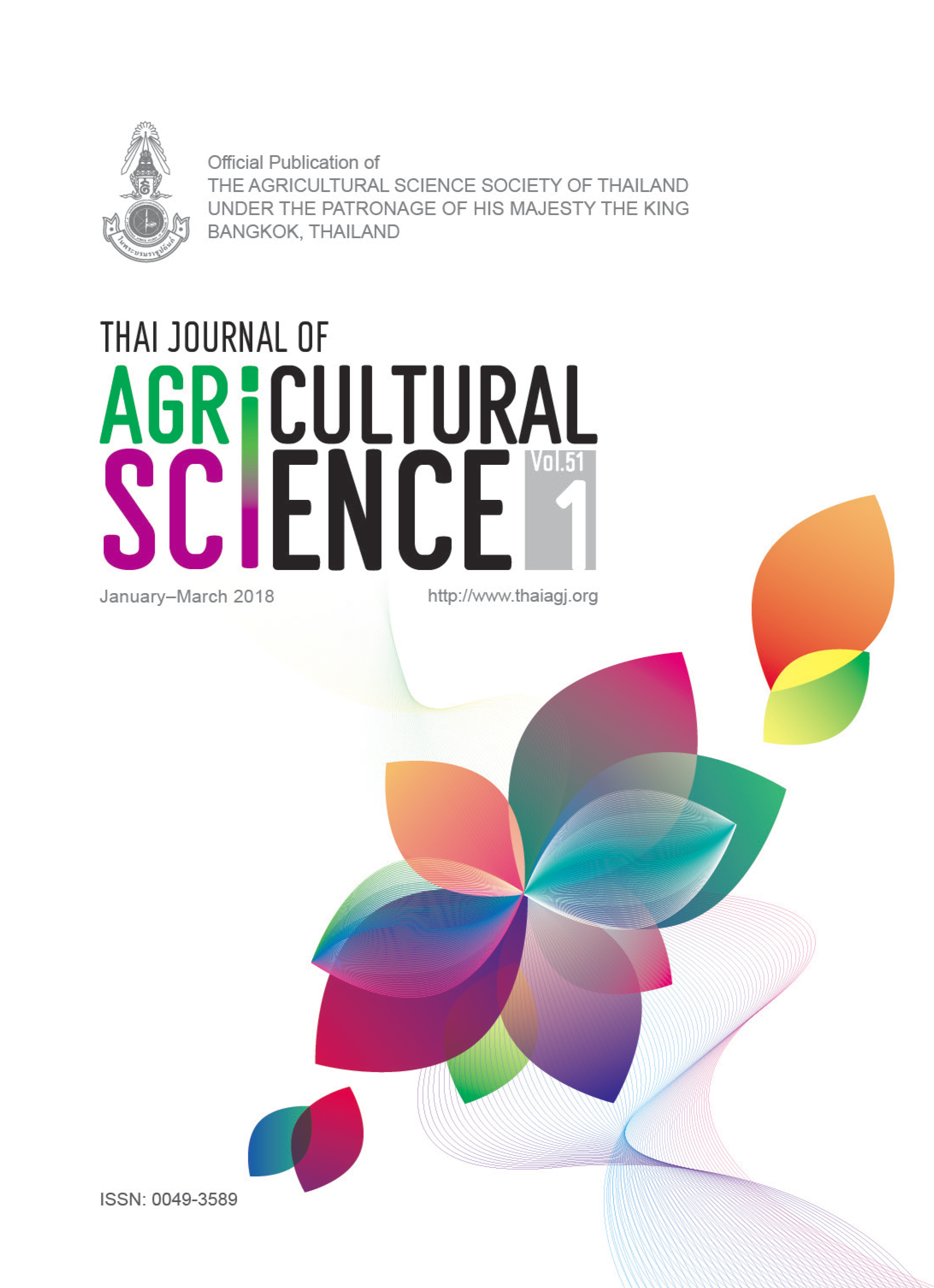Fertility Capability and Responses of Oxisols to Agricultural Wastes Biochar Application
Main Article Content
Abstract
This study focused on fertility capability and responses of Oxisols to agricultural wastes biochar application. All Oxisols in the study were Rhodic Kandiustox including three locations. S1, S2 and S3 of Pak Chong series and one location, S4 of Chok Chai series. Soil samples were from topsoil, 0‒20 cm depth and from base of topsoil to 60 cm depth and classified by the FCC (Fertility Capability Classification) system. Topsoils were incubated with pineapple peel, durian shell and palm kernel shell biochars for 1, 2, 4 and 8 weeks. After incubation, soil samples were analyzed for soil pH, soil EC, extractable K, Ca and available P. Results of the study revealed FCC units of these soils as S1 = LCdim, S2 = LCdim, S3 = Cdim and S4 = LCdim. After 8 weeks of incubation, most of the soil pH and all EC values increased. Extractable K, Ca and available P in soils incubated with pineapple peel and durian shell biochar increased while soils incubated with palm kernel shell biochar had extractable Ca increased and extractable K and available P decreased. The study results provide useful information about responses of Oxisols to short term effects of agricultural wastes biochar application. They also indicate that the dynamic exchange of mineral nutrients between soils and biochars exist.


